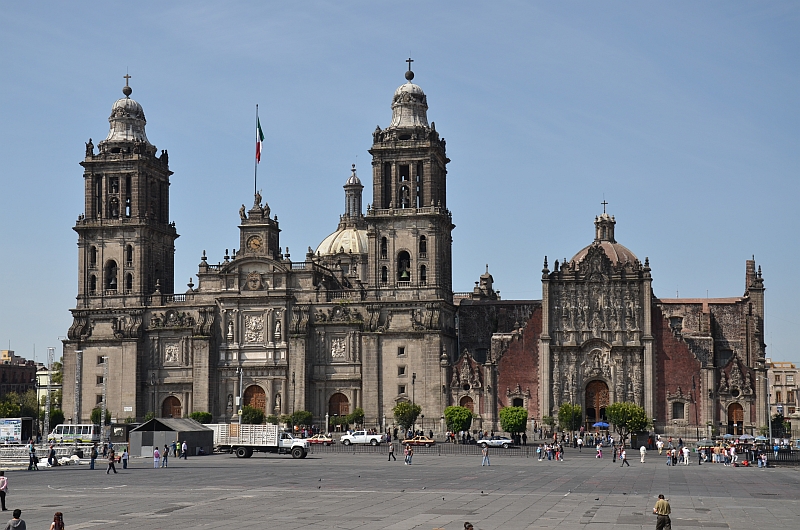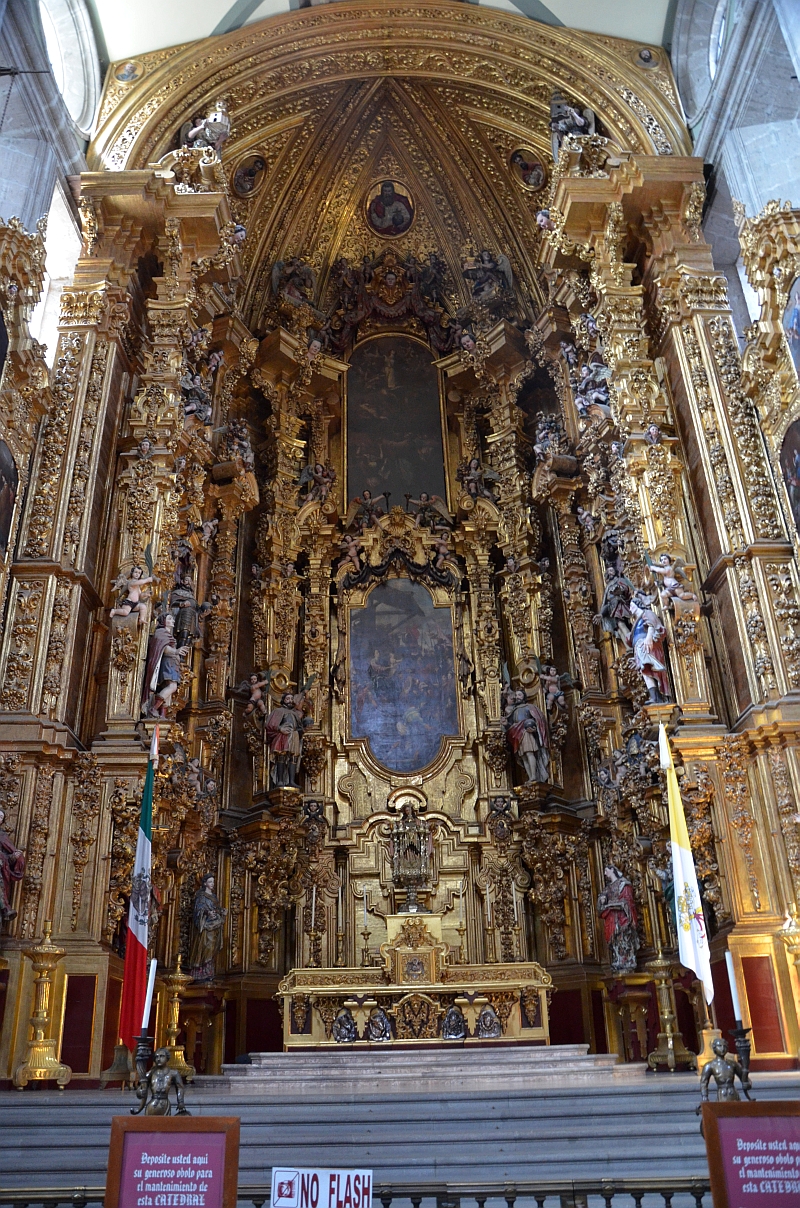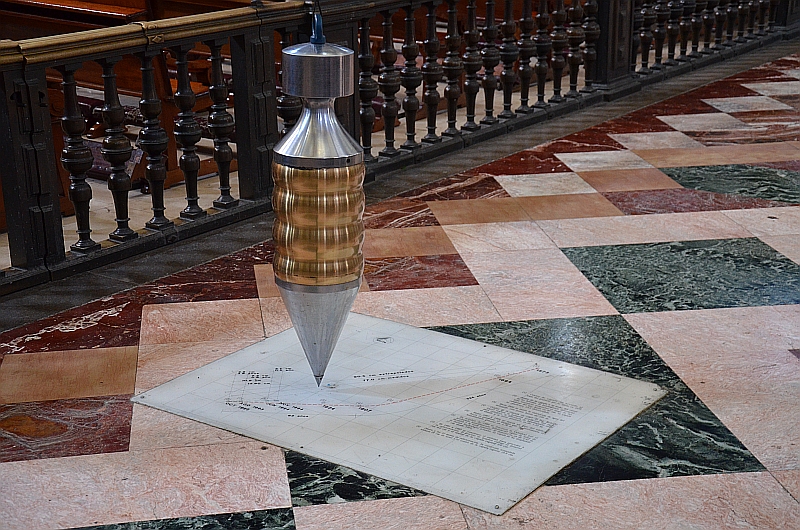15 million inhabitants? 20 million inhabitants? Who knows. For sure it is the biggest city in the western hemisphere and one of the top 10 worldwide. In the historic centre is the Zocala, the second biggest square in the world after the Red Square in Moscow. One one of its sides is the metropolitan cathedral, the oldest and biggest in Latin America. When you look at it, something is weird. Somehow this massive building is leaning, some parts to the left some to the right. So as are most of the old and tall buildings in this city. I noticed immediately upon entering the old town.
Mexico city is sinking dramatically. Actually some 30 cm a year. Too much water has been pumped and still is, from the aquifer beneath it, that the ground is collapsing at an alarming rate.
It is very difficult to imagine that, just 70 years ago, this area was filled with water. This was one of five lakes that used to enrich the Mexico City valley.
Now, in some areas there is only water for 1 hour a week, which besides that, is considered as non drinkable by most inhabitants. Less than 10% of Mexico City's waste water is recycled, compared with London where that figure is more than 90%. Most rain water is also lost.
Back to the cathedral with its impressive Spanish baroque façade: The building begun in 1525 on the site on an ancient Aztec temple. For years the cathedral had been sinking into the soft soil of what was once a lake. Extensive underground engineering efforts have largely stabilized the building. A pendulum suspended from the ceiling tracks the tilt, marking a record on the floor.


